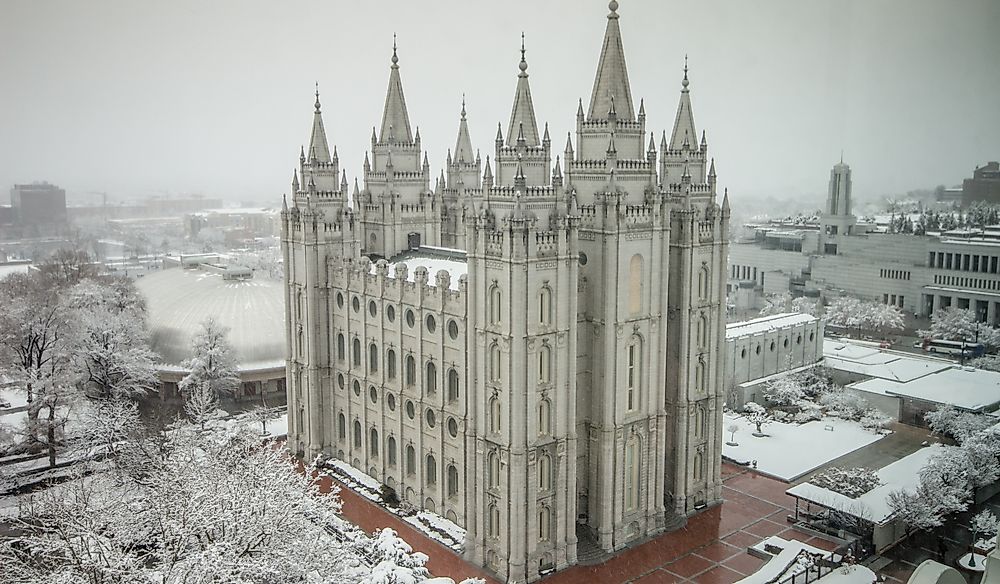Where Is The Mormon Corridor?

The Mormon Corridor is a region of the southwestern United States that was settled by followers of The Church of Jesus Christ of Latter-day Saints, more commonly known as the LDS Church or Mormonism, between 1850 and 1890. The area is also referred to as the "Mormon Culture Region" in academic literature as well as the "Book of Mormon Belt" in reference to the Bible Belt region in the southeastern United States and the group's sacred text, the Book of Mormon. The corridor begins in Utah, the modern-day headquarters of the LSD Church, and extends northwards into Idaho and Wyoming, eastwards into Colorado, southwards into Arizona and California, and westward into Nevada.
History of the Mormon Corridor
Mormon settlements in North America were established for agricultural production or to access metal, mineral, and other resources required by the growing population. The Mormon community traveled westward, today known as the Mormon Trail, in search of areas to settle before settling in Utah. Today, Utah is the headquarters of the LSD Church and is home to the largest Mormon population in the United States.
Between 1850 and 1890, Mormon communities built urban centers that served as waystations for immigrants. The LDS Church supervised the establishment of several outlying communities and sent out scouting parties in search of suitable settlement land and viable sources of timber, minerals, and water. By 1877, the church had established more than 400 colonies with four distinct roles. The colonies in Carson City, Nevada, served as recruitment centers and provided temporary shelter. The second colonies served as production and manufacturing centers, for example, Cedar City smelted iron, St George produced cotton, while Cache Valley reared cattle. The third colonies assisted and proselytized the Native Americans in Utah, southern Nevada, and north and central Idaho. The fourth group of settlements in Utah, Idaho, Nevada, and the neighboring states provided funds and homes for thousands of immigrants.
Expansion to Mexico and Canada
Punitive legislation and prosecution of polygamists in the United States prompted members of the LDS church in New Mexico and Arizona to migrate to Mexico where the church had identified settlement opportunities. However, the governor of Chihuahua State denied the Mormon colonists the opportunity to own land within the state but allowed them to rent and lease the same. Negotiations between the church, the governor, and Mexican President Porfirio Díaz led to the withdrawal of legal barriers to own land leading to migration of large populations of Mormon from the United States to Mexico. In 1886, church leaders moved north to the province of Alberta in Canada in search of settlements; a year later, Mormon populations in northern Utah established a colony in Cardston. By 1895, several permanent LDS communities had sprouted in the province.











